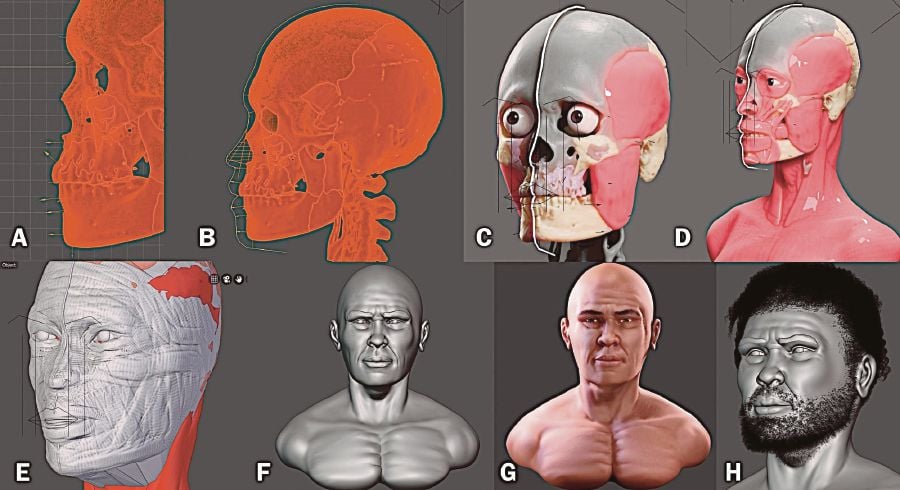The 11,000-year-old Perak Man gets a face

KUALA LUMPUR: Perak Man, the 11,000-year-old skeletal remains found 30 years ago in the Lenggong Valley, Perak, finally has a face.
A team of Universiti Sains Malaysia (USM) researchers and Cicero Moraes, a 3D graphics expert from Brazil, used the 3D virtual reconstruction method to create the Perak Man's facial features.
Dr Johari Yap, who is one of the researchers, said the project was mooted two years ago by Senior Consultant Neurosurgeon Prof Datuk Dr Jafri Malin Abdullah.
Johari, who is also Oral and Maxillofacial Radiology lecturer at the USM School of Dental Sciences, said Dr Jafri had invited him to reconstruct the hypothetical face of Perak Man.
Dr Jafri had conducted many studies related to neuroscience.
Johari, who is an expert in craniofacial imaging and 3D reconstruction and analysis of faces and skulls, said a copy of the original skull was made using computed tomography and 3D printing.
Johari said that before reconstructing the face, Moraes needed information such as gender, age and lineage to produce facial tissue based on the average tissue thickness measured during previous studies.
"Once the face is formed, we will discuss eye colour, skin colour and hair based on forensic anthropology.
"Because Perak Man is referred to as Australo-Melanesian and the descendant of the Negrito ethnic group, the features of Negrito people greatly influence the final image."
Perak Man, the most complete skeleton found in Southeast Asia, was uncovered at Gua Gunung Runtuh by a team of archaeologists led by Prof Datuk Dr Zuraina Majid in 1990.
The excavation revealed a 10,000- to 11,000-year-old primary burial site of an adult human buried in the foetal position.
The funerary artefacts indicate that Perak Man was highly respected, as he was buried at the centre of the highest cave in Lenggong, and he was the only person buried there.
Apart from Johari, Dr Jafri and Moraes, four other researchers are USM Centre for Global Archaeological Research director Prof Datuk Dr Mokhtar Saidin, Dr Helmi Hadi from the USM School of Health Sciences, Prof Dr Zainul Ahmad Rajion from the USM School of Dental Sciences and USM School of the Arts lecturer Norshahidan Mohamad.
Johari said Perak Man's estimated intracranial volume was 1,204.91ml, which was smaller than modern humans' cranial capacity of between 1,312ml and 1,479ml, and this may indicate a physical handicap.
"Despite being born with a physical handicap, Perak Man survived and lived a nomadic hunting and gathering lifestyle, probably due to considerable care given to him. He may have overcome his physical handicap by developing proficient hunting skills, or perhaps he rarely hunted and took on other tasks.
"Based on his presumed status, Perak Man was likely a respected person in the group and, perhaps, a shaman and the most knowledgeable person in the group regarding survival, hunting, gathering, and other aspects of Palaeolithic daily life.
"Perak Man likely lived as a hunter, similar to the lifestyle of the Negrito ethnic group, which could be his descendant," the researchers wrote in an editorial published in the Malaysian Journal of Medical Sciences. --Bernama
✍ Credit given to the original owner of this post : ☕ Malaysians Must Know the TRUTH
🌐 Hit This Link To Find Out More On Their Articles...🏄🏻♀️ Enjoy Surfing!



















Post a Comment